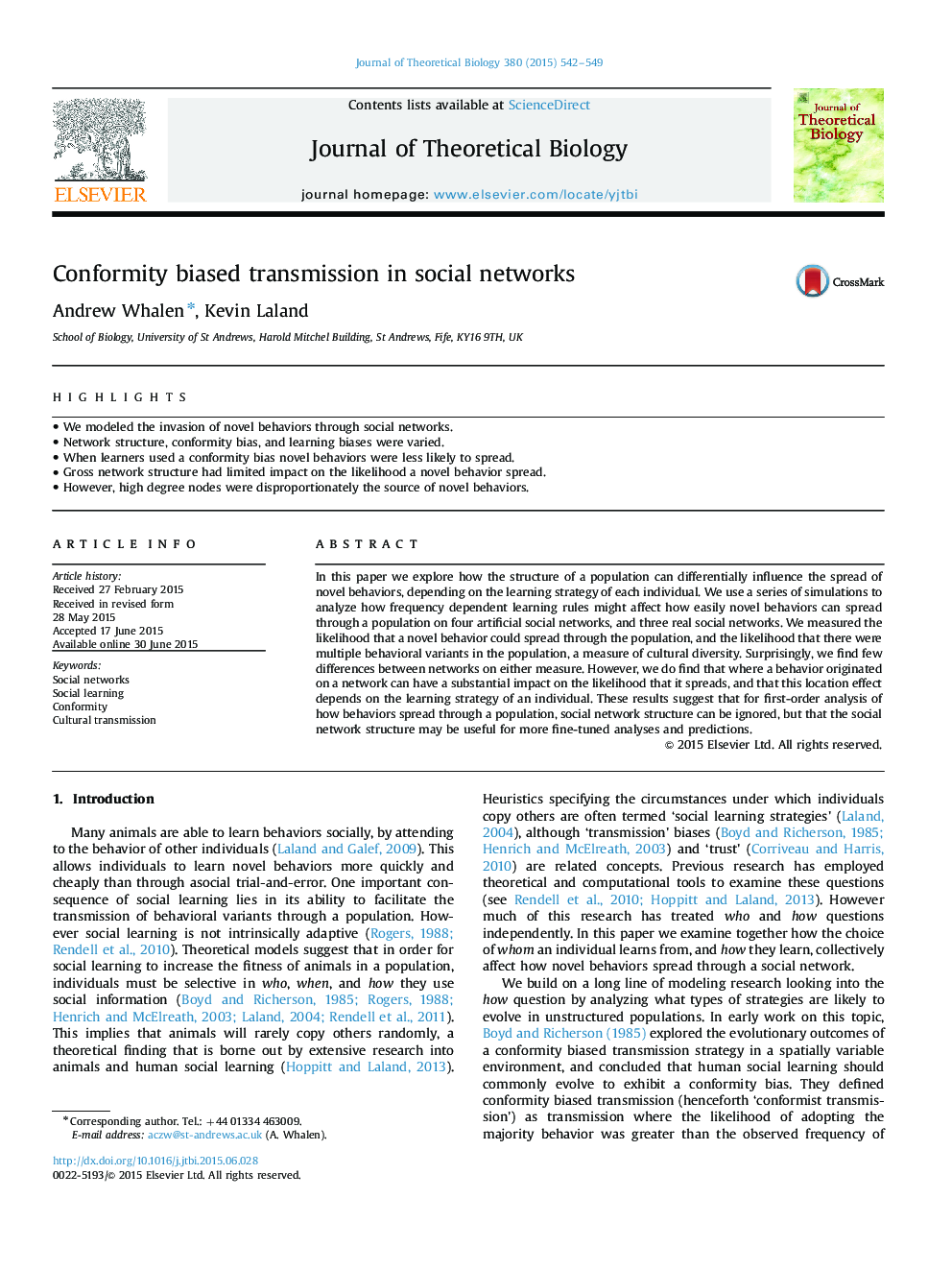| Article ID | Journal | Published Year | Pages | File Type |
|---|---|---|---|---|
| 6369698 | Journal of Theoretical Biology | 2015 | 8 Pages |
Abstract
In this paper we explore how the structure of a population can differentially influence the spread of novel behaviors, depending on the learning strategy of each individual. We use a series of simulations to analyze how frequency dependent learning rules might affect how easily novel behaviors can spread through a population on four artificial social networks, and three real social networks. We measured the likelihood that a novel behavior could spread through the population, and the likelihood that there were multiple behavioral variants in the population, a measure of cultural diversity. Surprisingly, we find few differences between networks on either measure. However, we do find that where a behavior originated on a network can have a substantial impact on the likelihood that it spreads, and that this location effect depends on the learning strategy of an individual. These results suggest that for first-order analysis of how behaviors spread through a population, social network structure can be ignored, but that the social network structure may be useful for more fine-tuned analyses and predictions.
Related Topics
Life Sciences
Agricultural and Biological Sciences
Agricultural and Biological Sciences (General)
Authors
Andrew Whalen, Kevin Laland,
